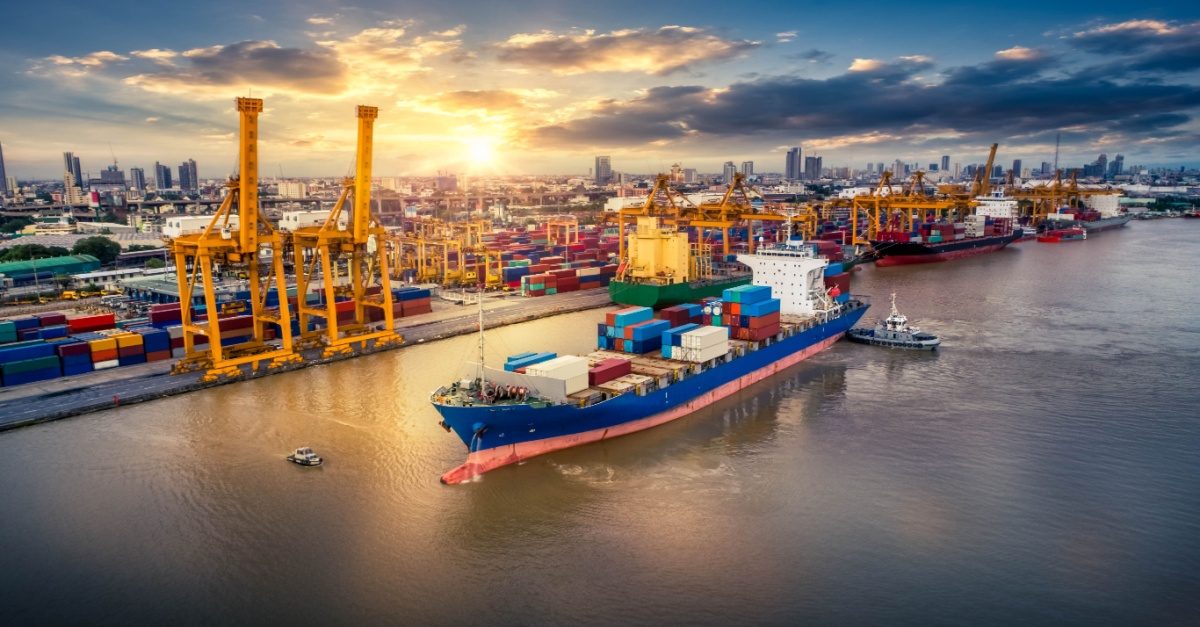
Global Shipping Challenges and Solutions: Navigating the Future of Supply Chain Logistics
Global shipping is the pillar of modern commerce. It lets shipments travel across borders, connecting businesses to customers around the world. However, the supply chain landscape needs fixing due to shipping inefficiencies. Otherwise, these can result in interrupted operations, increased transportation costs, and reduced customer satisfaction. A shipping company must overcome them to maintain a competitive advantage in global trade.
This article will discuss the most significant problems with international shipping and propose shipping solutions for navigating the future supply chain.
Key Takeaways
- Dealing with supply chain disruptions requires various solutions. These include risk management strategy, contingency plans, and transparency with partners and suppliers.
- Infrastructure improvements, digital transformation, and process optimisation are all essential. These will fix constraints while increasing efficiency and capacity.
- Businesses must cooperate in sustainable practices. A few examples are using cleaner fuels, reducing carbon emissions through technology, and route optimisation.
- Increase awareness of the cybersecurity field and its potential threats. Setting up strong cybersecurity measures helps in applying the best practices.
Current State of the Global Shipping Industry
The industry is facing international shipping challenges at the present moment. The issues worsen due to the COVID-19 pandemic, revealing the risks in the global transportation network.
But on the brighter side, it shows excellent potential and flexibility. International shipping companies use artificial intelligence (AI) and blockchain in their logistics services. Using these technologies has made businesses committed to transparency and sustainable transportation of international shipments.
Companies must first evaluate the current shipping problems to provide effective solutions.
What are the major challenges faced by the shipping and logistics industry?
There are significant issues that affect the international shipping and logistics industry. These are the following that changed its operations and performance:
Supply Chain Disruptions
Supply chain interruptions are unforeseen events that delay the flow of international shipments. Natural disasters, political tensions, and transportation issues are all potential disruptions.
Even worse, potential disruptions can spread across the supply chains. They cause delays due to port closures, barricades, and international trade bans. These lead to delivery interruptions, rising costs, and reputational damage.
As a result, it affects delivery partners, customers, and the business’s financial performance.
Capacity Limitations
Due to expanding global trade volumes, capacity limits are a severe concern for the international shipping and logistics business.
Limits on capacity arise when there are inadequate resources for global logistics demands. A few examples are restrictions in port capacity, storage space, or transportation networks. This results in port congestion and additional costs for shippers and logistics providers.
The capacity shortage also differs by transportation. Road, rail, air, and sea transit all present specific shipping challenges. For instance, traffic congestion and infrastructure limitations disrupt road transportation due to poor traffic management and lack of infrastructure upgrades. On the other hand, rail transit may encounter capacity constraints because of limited track availability and scheduling problems.
Environmental Regulations
Environmental laws are getting stricter due to pollution and climate change. However, they differ by location and legal authority. These include emission standards, waste disposal regulations, and efficiency requirements.
Shipping companies should follow emissions, waste disposal, and fuel efficiency rules. Otherwise, it can lead to penalties and reputational harm.
Cybersecurity Threats
Many businesses rely on digital technologies to operate and connect with customers. But, it comes with cybersecurity risks. These can cause severe problems for the shipping and logistics industry.
Cyberattacks can interrupt a business. These issues can be (but not limited to) data breaches, ransomware, or phishing attacks. They can compromise sensitive data, which leads to monetary losses. A cyberattack on a shipping company affects the shipping industry due to the linkage of global supply chains. Cybercriminals target shipping businesses to steal information, disrupt operations, or demand ransom payments.
Meanwhile, the growth of the Internet of Things (IoT) in the maritime industry has increased the attacks. It gives cyber criminals more reasons to take advantage of the vulnerabilities.
What are the solutions to these challenges?
Several strategies pave the way for navigating the future of global supply chains. We can address the current challenges in international shipping through the following:
Diversify
Diversification is a tactical shipping solution that reduces the dependency on a single direction and source, letting shipping companies access new markets and opportunities. This is essential for addressing supply chain disruptions and capacity constraints by minimising interruptions while supporting long-term growth.
Businesses can incorporate diversification as their strategic advantage by increasing the number of suppliers, distribution networks, and alternative routes. Diversifying the supplier base assures companies of the continuous flow of shipments, even during unforeseen events. Meanwhile, using transportation modes, such as road, rail, air, and sea, lets them adjust to the changing market conditions and improve delivery times.
Invest in Structures
This refers to allocating resources to enhance the physical infrastructure and operational frameworks that support the movement of shipments across the supply chain. This investment covers various areas, like ports, warehouses, transportation networks, and technology systems.
Investing in infrastructure and technology is necessary to meet the rising demands while simplifying operations. It optimises processes, boosts resource allocation, and lowers shipping costs.
This involves building bigger facilities, updating ports and vehicles, using automated storage and retrieval systems, and utilising technologies such as RFID (Radio Frequency Identification) for inventory management.
Shipping companies who invest in structures have a higher chance of better standing. Hence, adapting to the ever-changing global shipping industry makes them stand out more.
Compliance with Environmental Regulations
Implementing sustainable practices is essential for the international shipping industry as environmental regulations become more rigid.
Companies can lower their carbon footprints by switching to green fuels, optimising shipping routes and investing in energy-efficient technologies.
Embracing sustainability not only guarantees compliance with standards but also improves business reputation and attracts customers with the same advocacy. This way, businesses can promote long-term commitment to the environment.
Prioritise Cybersecurity Measures
Cybersecurity protection safeguards digital assets and maintains the integrity of their operations. It assures the reliability of their services in a digitised and interconnected world.
Employees can make use of regular cybersecurity training. They will become more aware of the potential risks for maintaining cybersecurity health.
Collaborating with cybersecurity professionals, government agencies, and technology providers helps improve unified defences against cyber threats. These partnerships lead to the best cybersecurity practices as you share your knowledge within the industry.
What are the trends that the shipping industry will look forward to?
Several innovations define global trade’s bright future. Here are the market trends that the shipping industry must anticipate:
- Digitalisation is changing the traditional shipping processes, making work more efficient. These digital advancements include blockchain for transparency and the Internet of Things (IoT) for real-time tracking.
- Automation and robotics have a positive and significant impact on port and logistics services. These help simplify operations, minimise costs, and improve security.
- One of the market trends to look forward to is the rise of sustainable shipping practices. This is due to the increased concerns about environmental sustainability, making businesses fall under pressure to lessen their carbon footprints and apply renewable solutions. It involves using alternative fuels, optimising shipping routes to save on fuel prices, and investing in greener technologies.
- There is greater emphasis on data and predictive analytics for demand forecasting. By using big data, shipping businesses can make more informed decisions and optimise routes. This results in higher productivity, minimised transportation costs, and improved allocation of resources.
International Shipping
As international trade evolves, global shipping remains the key to the world economy, promoting growth across borders. This creates a need for efficient and reliable shipping solutions such as the following:
- Navigating customs regulations is among the current challenges across countries and regions. It requires expertise in compliance and documentation for smooth and seamless operations.
- Despite the limitations involving political conflicts, piracy threats, and natural disasters, international shipping allows companies to expand and enter new markets. Using efficient transportation networks reduces lead times and shipping costs, improving customer satisfaction.
- New technologies like containerisation and GPS tracking have transformed international shipping. Digital transformation makes it faster, safer, and more dependable.
Final Thoughts
The international shipping sector is at an essential stage of its development. It faces many challenges while embracing innovative solutions. Supply chain disruptions, capacity constraints, environmental laws, and cybersecurity risks require planning. Yet, these problems provide a relentless pursuit of development, resilience, and sustainability. The international shipping sector can give way to better global trade by adapting to change and innovative opportunities. Together, we can create a more solid world maritime industry for future generations.

Article by Diana Zheng, Stallion Express
Diana leads the growth marketing initiatives at Stallion Express. As a personal trainer turned digital marketer, Diana is obsessed with equipping eCommerce entrepreneurs with everything they need to scale their online businesses. You can catch her doing yoga or hitting the tennis courts in her spare time.

As global trade is pivotal to the economy, the need for skilled, engaged employees within your logistics operations should be a key priority for every supply chain manager. IoSCM can help you upskill your employees with professional development, expert support, and useful resources. Call 0800 1422 522 today to find out more.
